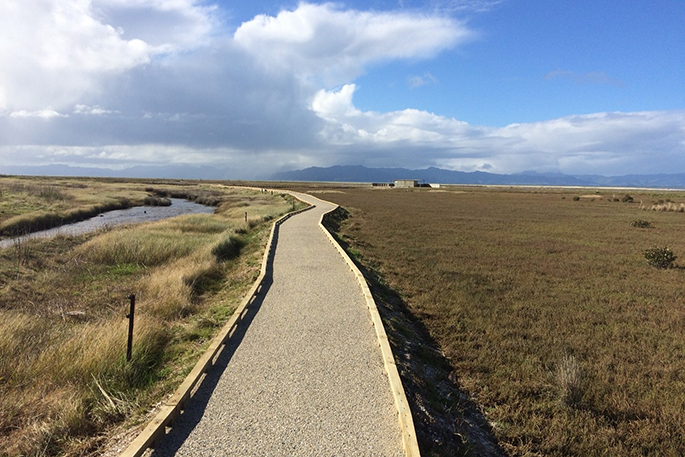The epic 12,000km journey made by some of New Zealand's favourite migratory birds from the Coromandel to the Arctic is set to become safer.
Last week UNESCO's World Heritage Committee agreed that parts of China's Yellow Sea and the sanctuaries it provides for migratory birds will become a World Heritage site.
Prime Minister Jacinda Ardern and Conservation Minister Eugenie Sage welcomed the announcement at the Pukorokoro Miranda Shorebird Centre today.
The UNESCO agreement, supported by New Zealand, paves the way for protection of these important stopover sites for New Zealand's migratory native birds in the Yellow Sea.
'New Zealanders care deeply about backing nature and backing birds like the godwits and red knots. It's fantastic that the stopping points of shorebirds like the godwit and red knots on their annual flightpath from the Firth of Thames to Alaska are on track to have enhanced protection and recognition,” says Eugenie.
'These tiny birds – the godwit weighing only 300-600g and red knots a miniscule 100g – make this epic annual journey from Miranda to and from their Arctic breeding grounds with only one stop en route in China's Yellow Sea to feed,”
The specific sites the birds use will be part of a Yellow Sea World Heritage proposal to be developed by China with support from other partners in the East Asian-Australasian Flyway Partnership.
The East Asian-Australasian Flyway for migratory birds extends from Awarua Bay in the south of New Zealand and crosses China on its way to the North Slope in Alaska.
An agreement signed in May will see the Department of Conservation and China's National Forestry and Grassland Administration work together to protect, manage and restore wetlands where red knots, godwits and other migratory shorebirds stop to feed during annual migrations between New Zealand and their breeding grounds.
'Equally important is the work being done on this side of the Pacific. The recent acquisition of the Robert Findlay Reserve at Miranda was a significant local contribution to the conservation of migratory shorebird habitat in New Zealand,” says Eugenie.
'The reserve incorporates two of the most important high tide roosts for shorebirds in the Firth of Thames. Its creation is a real credit to the Pukorokoro Miranda Naturalist Trust, Waikato Regional Council and Foundation North.
'The Trust's ongoing commitment to promoting awareness of coastal ecology and advocacy for shorebirds and their habitats is particularly significant,” says Eugenie.
The work being undertaken at the Firth of Thames is also being supported by work at other internationally important shorebird sites such as the Avon Heathcote Ihutai Estuary. The Government is also actively developing new rules and practices to improve the water quality in our rivers and streams.
This will have a direct impact on the coastal wetlands that knots and godwits use as non-breeding areas in New Zealand and help secure their long-term survival as some of the planet's most remarkable travellers.



1 comment
Wetlands vs Global warming
Posted on 17-07-2019 10:37 | By Glenn Holmes
Great news, global warming may stop the decline of wetlands, and thus, help migratory birds. But if fish stocks decline for those high flying winged wonders due to humans and their increase, what is gained ?
Leave a Comment
You must be logged in to make a comment.